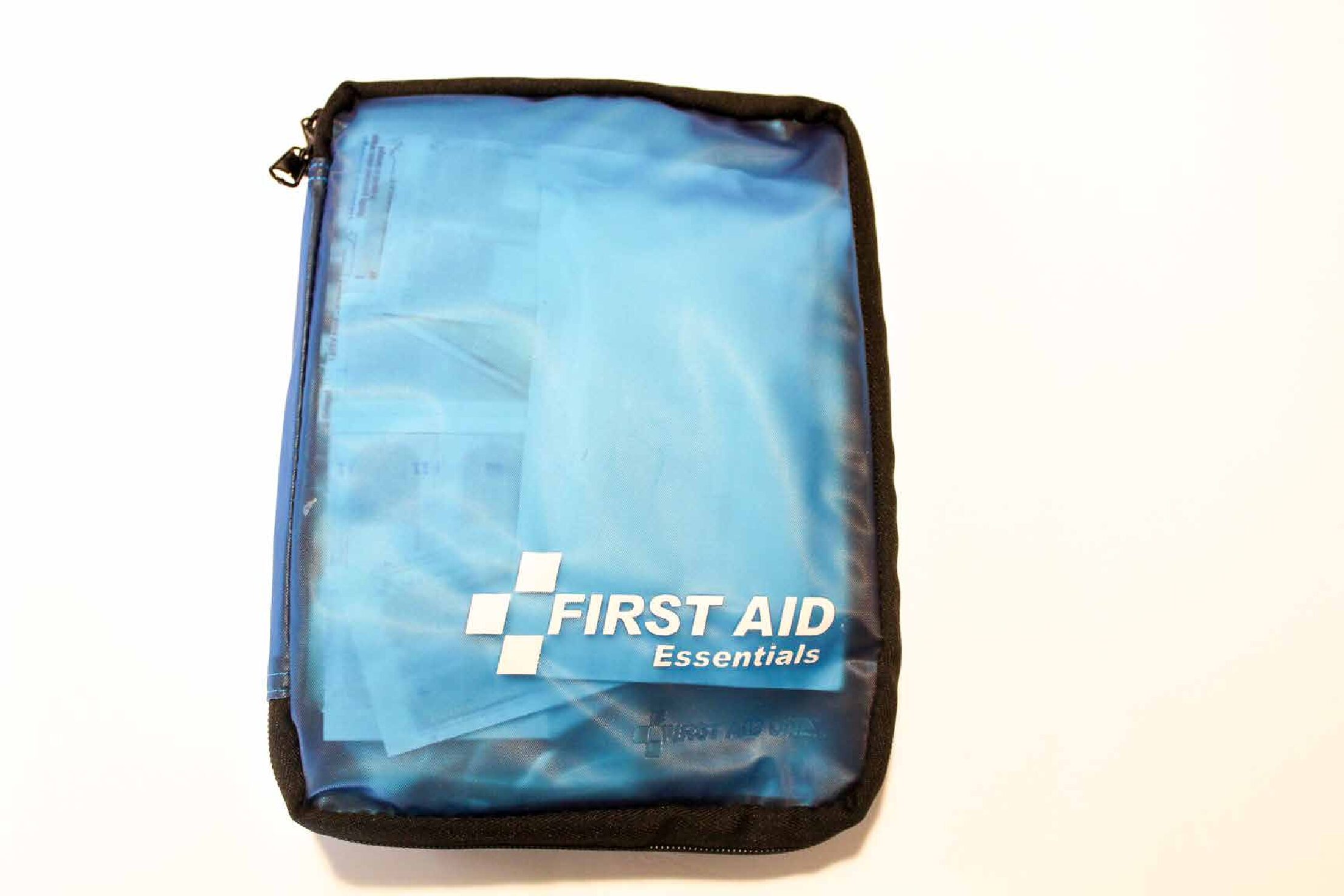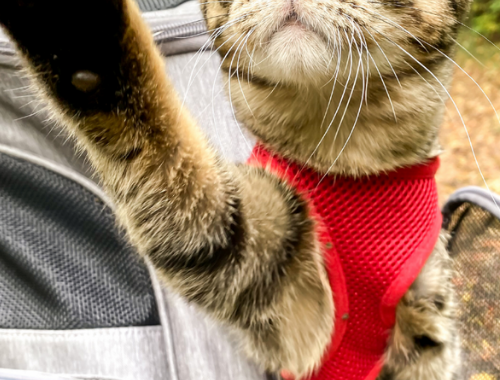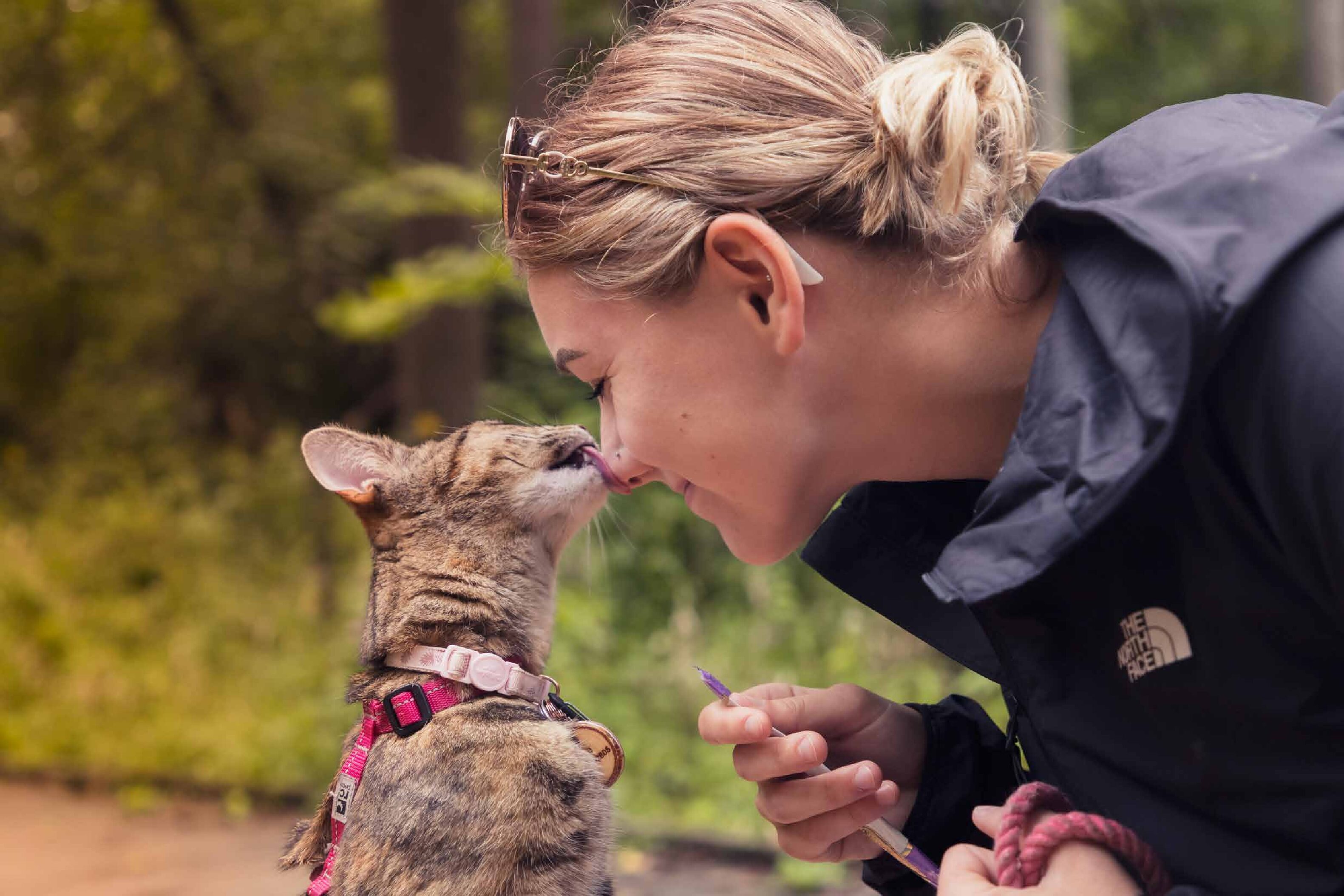
HOW TO MAKE A FIRST-AID KIT FOR YOUR PET
It is very important to be prepared for injuries out on the trails. We do not want to ever think about our pets getting hurt, but accidents can happen when out and about. You can never predict everything that will happen when out exploring, but you can at least be prepared for it in the best way possible! We recommend you talk to your vet and get suggestions for what to include in your cat’s first aid kit as well!
Pet First-Aid Classes
Online pet first aid classes are available if you are interested in becoming more knowledgeable on how to handle emergency situations and the best ways you can help your pet! Topics covered include things such as how to check your pet’s vitals, how to perform CPR on your pet, how to handle insect/snake bites, and much more! These classes are a great resource if you are interested in learning more! Some classes may only be available in certain countries, so always double check that.
- Some options include:
Before You Go
Before you head out on the trails, it would be a good idea to know the closest veterinary hospitals in that area, both general practices and emergency hospitals. This way, if something does happen, you know the quickest place to go to. Writing down their numbers to keep on you is a good idea too, that way you can call ahead to let them know you are coming, especially if it is true emergency. It would also be a good idea to keep your cat’s updated medical records in the first aid kit so that if you have to take them to a vet that hasn’t seen you before, they can review that quickly.
Purchasing a Pre-Made Pet First-Aid Kit
There are many options available on Amazon and through pet companies to purchase a pre-packaged pet first-aid kit. This way, you can be prepared and have everything you need, without the hassle of putting one together yourself! These will also come with some sort of pet first aid manual which can be very helpful. Some of the ones we’ve seen include:
Making your own Pet First-Aid Kit
If you want to make your own first aid kit, here are a few things to include:
- Disposable gloves – to protect yourself if your cat gets any open or bleeding wounds.
- Saline flush – use to flush out any debris and clean out an open wound.
- Syringe – can be used to help flush the wound with the saline.
- Antiseptic ointment or wipes – helps clean out the wound before bandaging it.
- Kwik-stop – stops bleeding from a broken nail.
- Gauze pads – place over top a bleeding cut before bandaging. Both regular and non-stick are good to have.
- Bandage material / vet wrap – to bandage the wound and add slight compression to aid in stopping the bleeding.
- Bandage tape – helps ensure the bandage stays on or does not come undone.
- Bandage scissors – if you need to cut off an old bandage to re-wrap.
- Benadryl – in case of an allergic reaction. Check with your vet for a recommended dose for your pet.
- Tweezers / tick remover – use to remove any foreign objects (splinters, etc.) or insects/ticks.
- Cool compress – the instant ones where you can crush the content and shake it and it becomes cold. This is great in case your pet overheats, but also to apply to any bites or irritants that they encounter.
Things to Note:
- Staying calm is very important. Your cat can sense if you are stressed out and it can make them freak out more. We know it is easier said than done, but do your best to try to keep your cat feeling as safe and calm as possible.
- Feel free to mix and match. Most online pet first-aid kits are pretty similar, however if you feel you are missing something important from one you want to purchase, you can also add a few things of your own to it once you get it!
- Though all these things are great to have with you in a first aid kit, it can take up a lot of room to carry around with you in your backpack. We suggest having a full first aid kit that you keep in your car and a smaller version to carry with you out on the trails.
- We suggest always going to the vet to get the injury checked out, no matter how minor it is. You can never be too safe, and it is best to have a vet just check it over and make sure everything is okay.
We hope this article was helpful in some way to ease your mind about any potential risks or injuries that can happen when out exploring. Though we hope you never have to deal with any of these risks, we want you to be prepared for it if you do. That is why we linked some resources in this article to help you out! Please feel free to check them out. We hope you have some safe and happy adventures with your kitties
You May Also Like

Meet Spaghetti
April 2, 2021
Top Tips To Keep Your Cat Warm In The Winter
November 13, 2020


